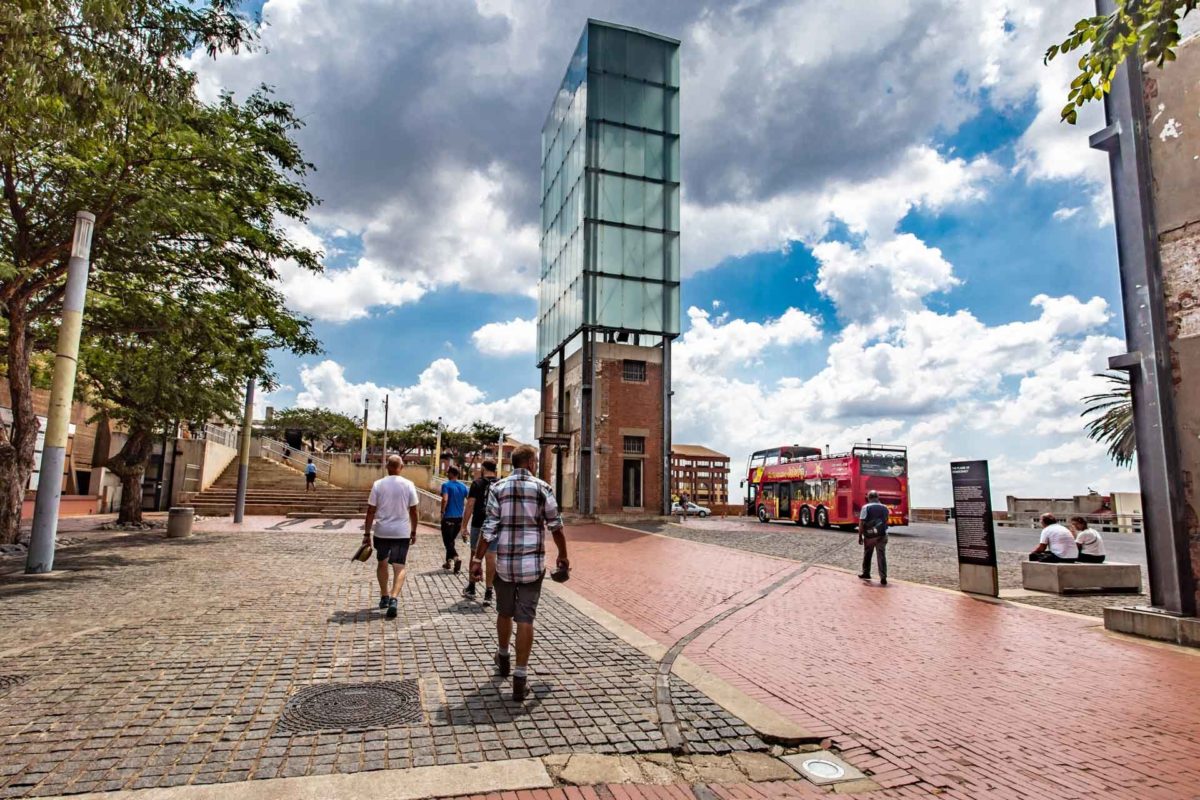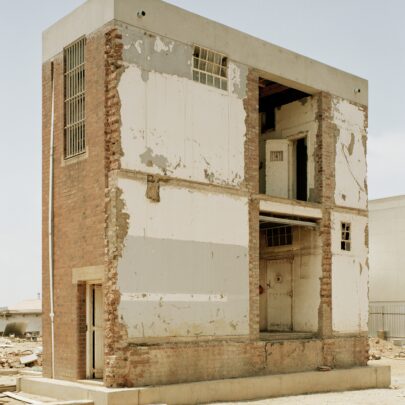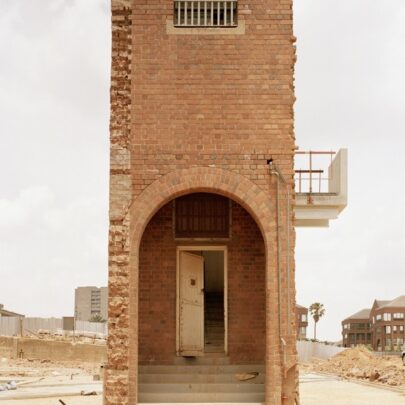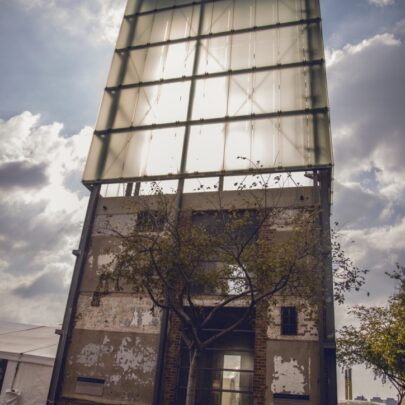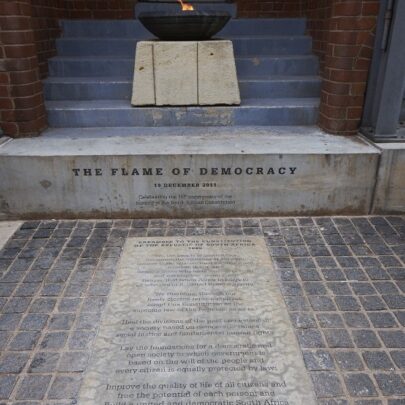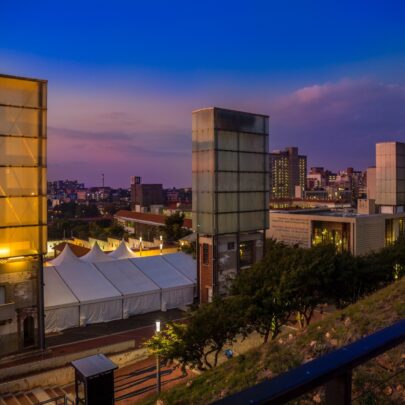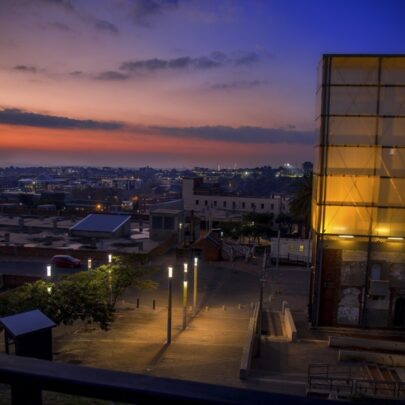Today, the Flame of Democracy – a perpetual flame that serves to remind South Africa’s citizens of their right to a life free from oppression and injustice – burns inside one of four stand-alone staircases at Constitution Hill. These staircases are the last remaining structures of what was once the precinct’s Awaiting Trial Block.
Built in 1928, the Awaiting Trial Block housed thousands of black people while they waited to be tried for transgressing a range of apartheid laws. In an ironic twist of fate, the block’s communal cells often provided those arrested with the opportunity to meet and talk in ways that would have been illegal outside its walls.
In December 1956, in an arrest that preceded the historic Treason Trial, the Awaiting Trial Block held 156 activists on charges of high treason. By the time the trial ended five years later, in 1961, all of the accused had been acquitted. The block also held the PAC pass resisters in the 1960s, including Robert Sobukwe.
When Constitution Hill was refurbished, the Awaiting Trial Block was demolished, with the exception of four of its staircases, which stand as testament to what was. Two of these can be found on Constitution Square, another inside the Constitutional Court foyer and the last just behind the court.
With poignant symbolism, the bricks, once physical barriers against freedom, were used to build South Africa’s new Constitutional Court, which serves to uphold the rights of all South Africans. The bricks were also used to create the Great African Steps, which run between Number Four and the court, bridging its past and its present. The Constitutional Court is a deeply symbolic space, and its story is one worth reading.
Share Article

 +27 11 381 3100
+27 11 381 3100
